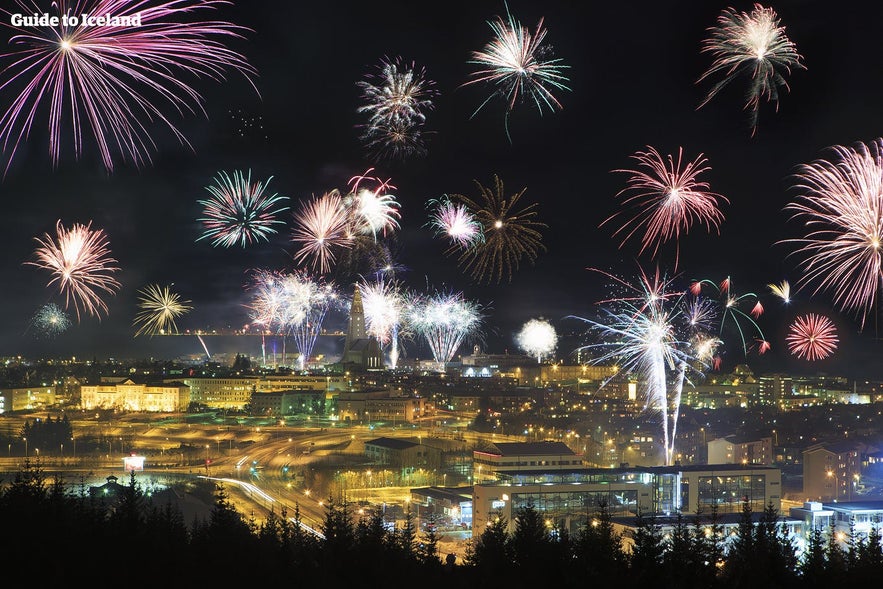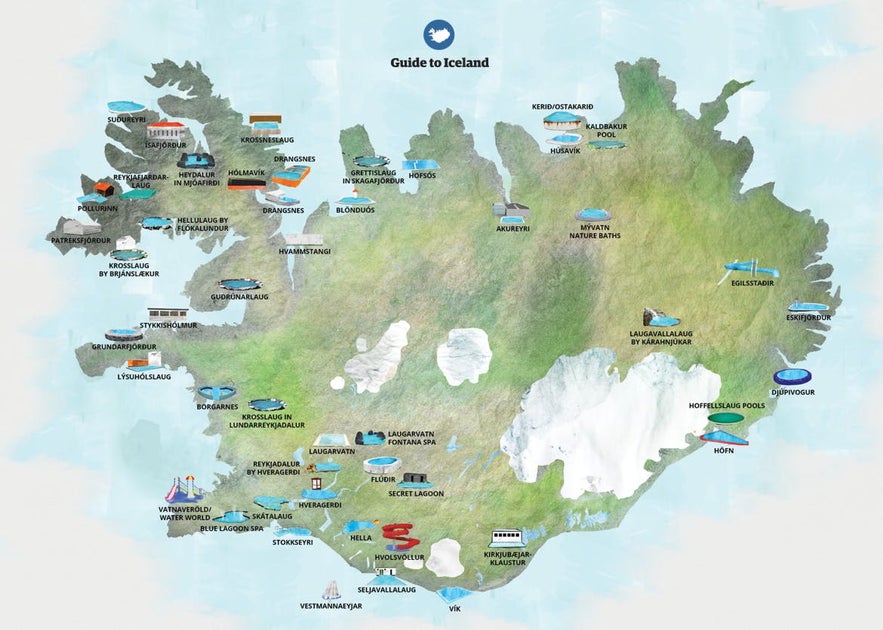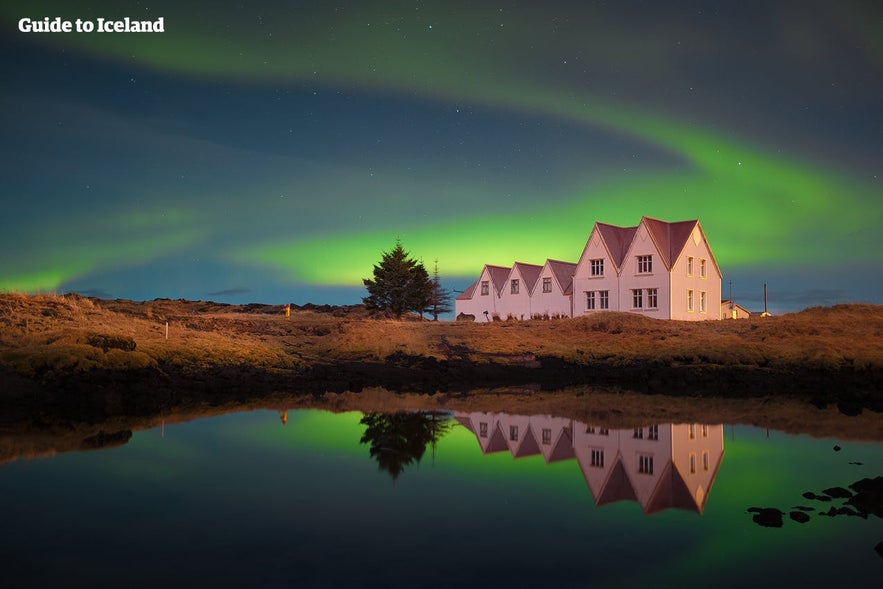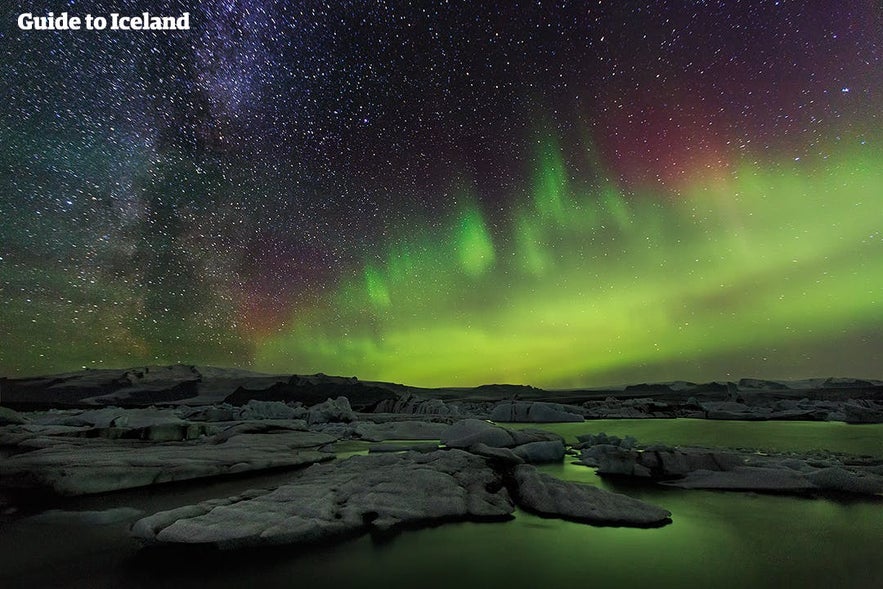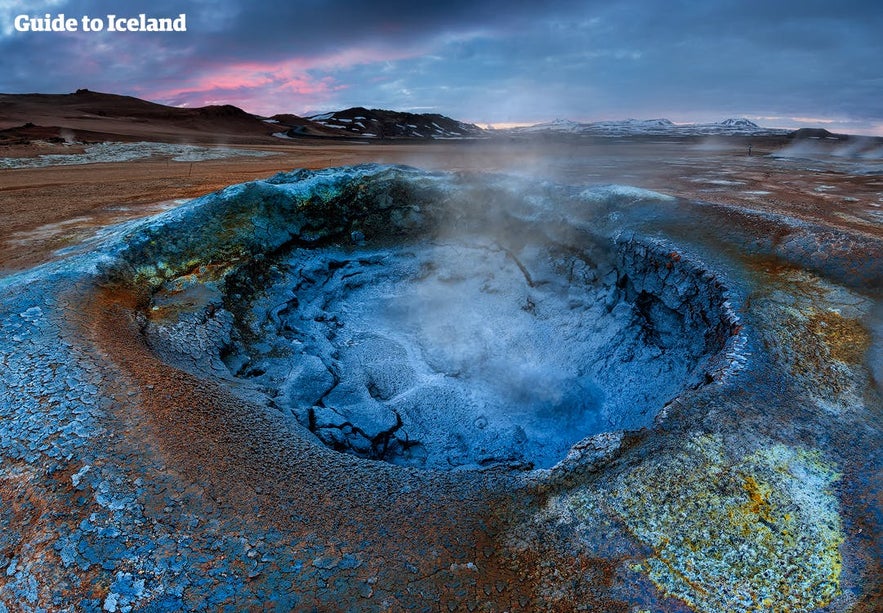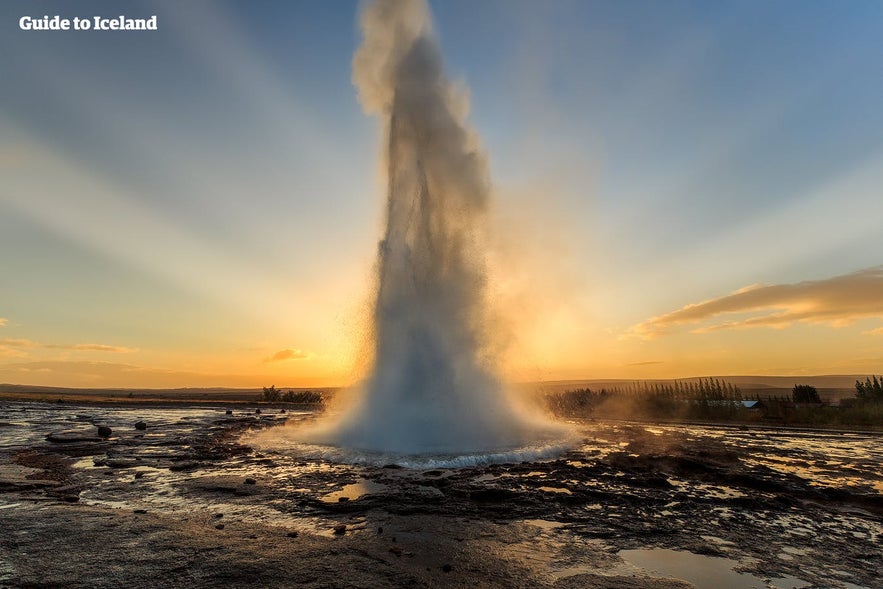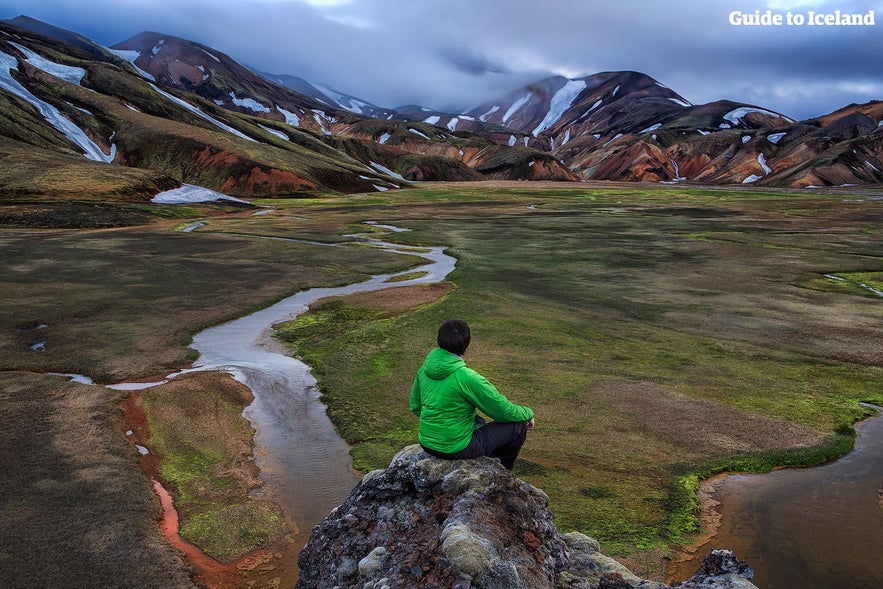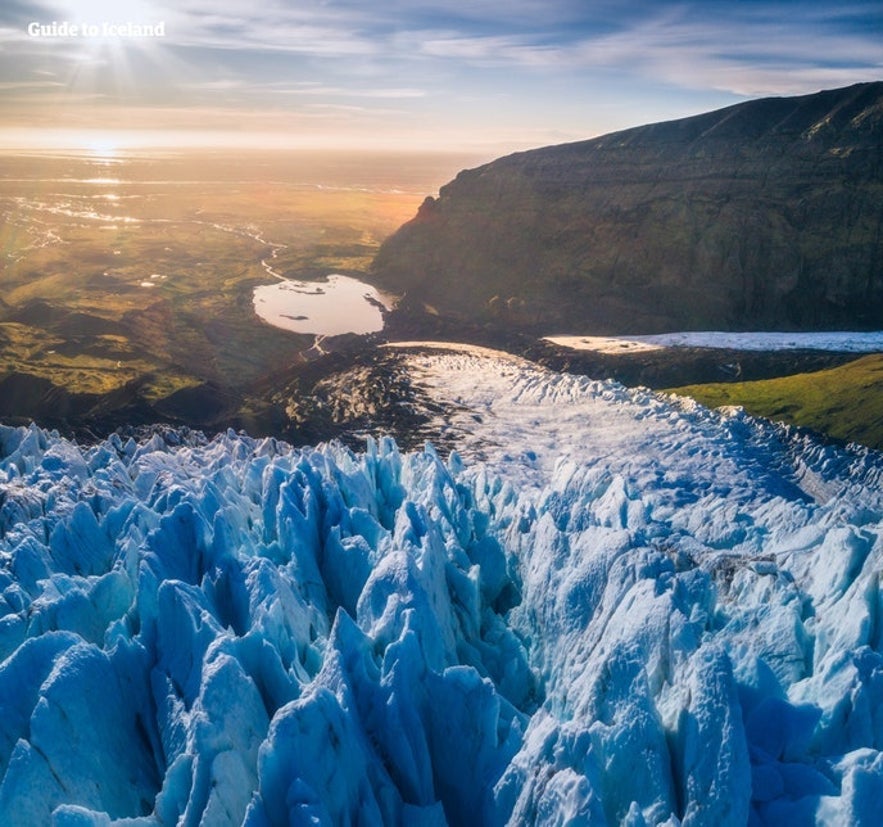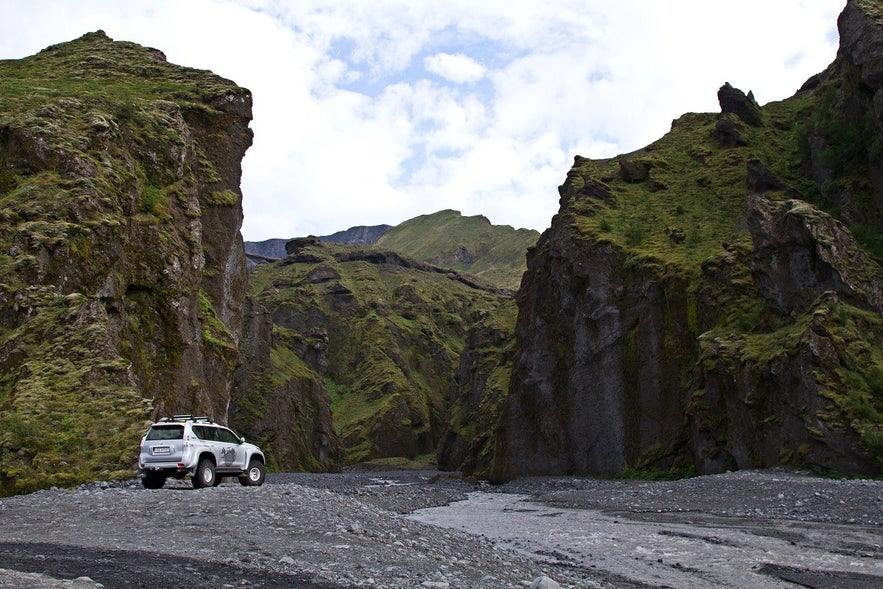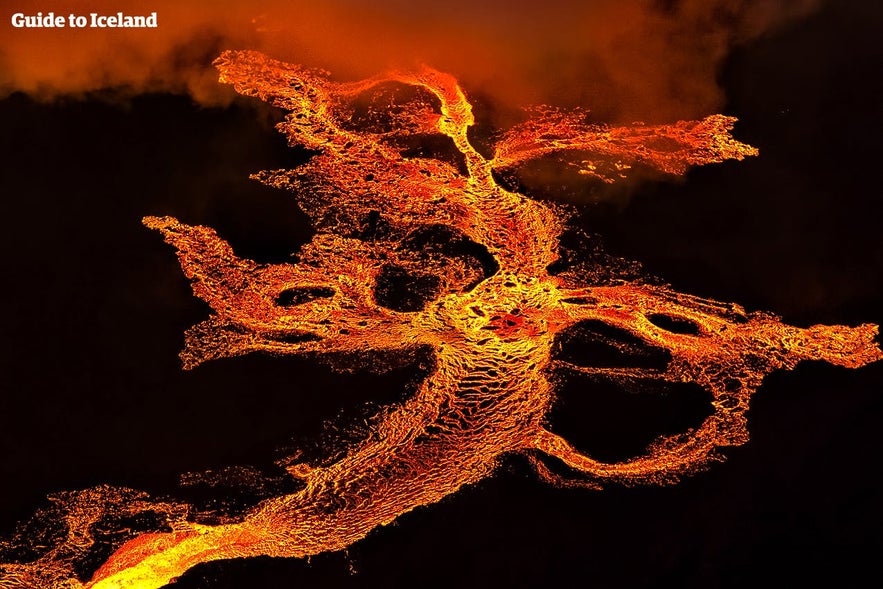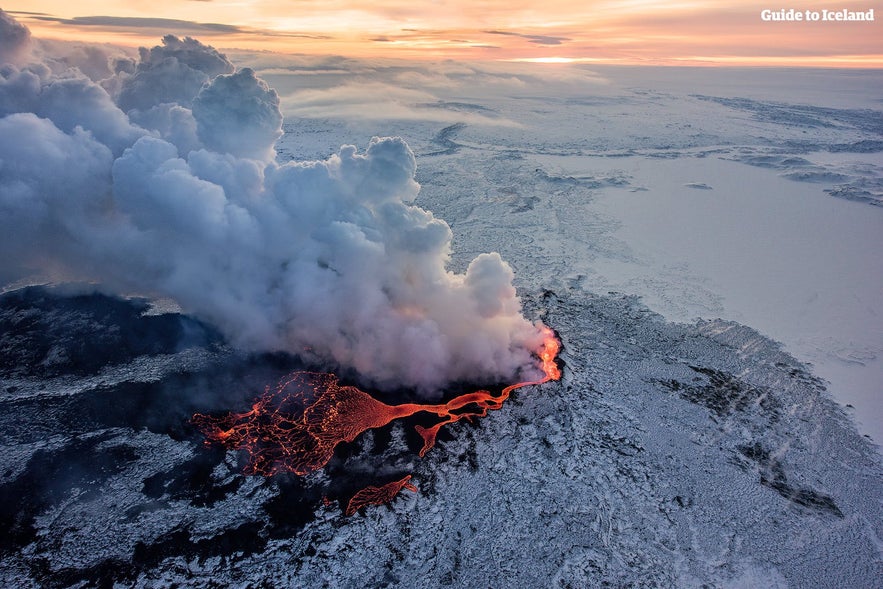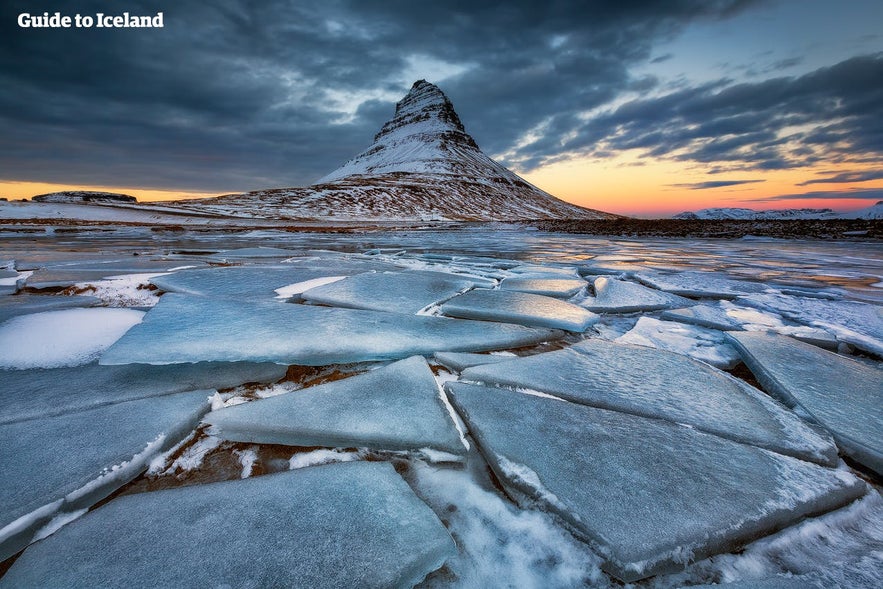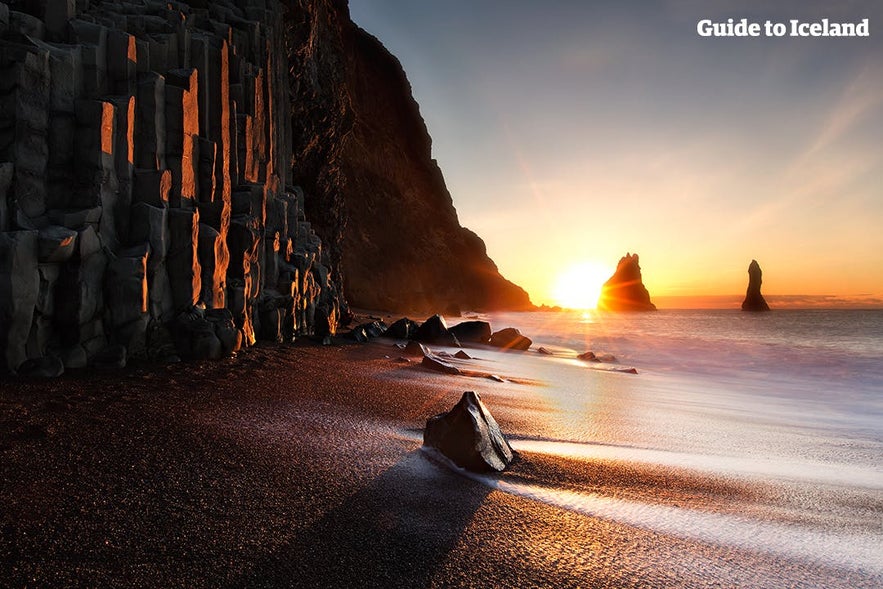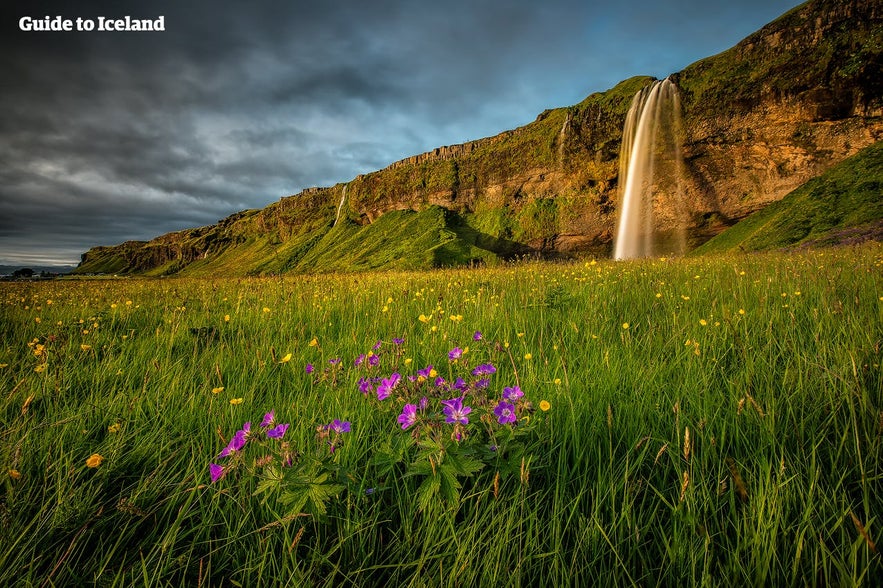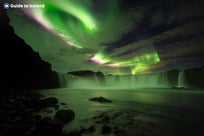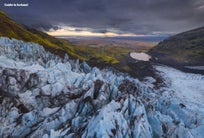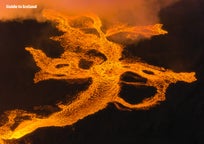
24 Things Not To Do in Iceland

- 24. Bringing an Umbrella to Iceland
- 23. Buying Bottled Water
- 22. Going Out Partying and Stopping at Midnight
- 21. Not Going to a Swimming Pool Because it’s Cold Outside
- 20. Not Bringing a Swimsuit
- 19. Relying Solely on Your GPS
- 18. Trying to Book a Room in an Ice Hotel
- 17. Coming in Winter To See the Midnight Sun or Summer To See the Northern Lights
- 16. Bringing a Flashlight to a Camping Trip
- 15. Trying to Photograph the Northern Lights with a Flash
- 14. Leaving for a Day Out in Winter at Sunrise
- 13. Throwing Coins into the Pools and Hot Springs
- 12. Only Staying in Reykjavik
- 11. Littering
- 10. Trying to See a Penguin or Polar Bear
- 9. Not Filling up on Alcohol at the Duty-Free Store
- 8. Not Dressing According to the Weather
- 7. Leaving Marked Trails in Geothermal Areas
- 6. Writing in the Moss
- 5. Driving Off-Road in Iceland
- 4. Going for Highland Roads in a Two-Wheel Drive Vehicle
- 3. Underestimating the Forces of Fire and Ice
- 2. Climbing on the Icebergs at Jokulsarlon
- 1. Playing in the Surf at Reynisfjara Beach
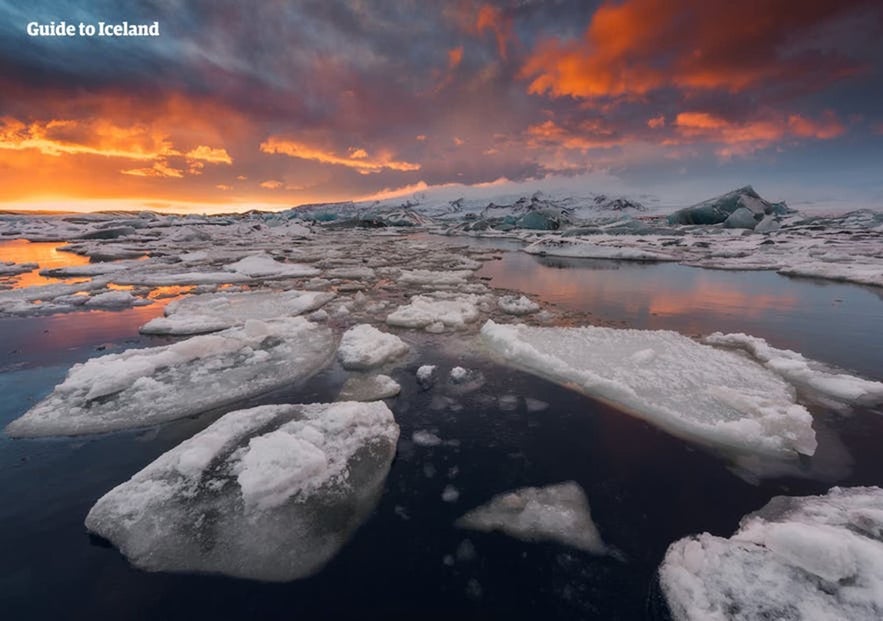
Read about what not to do in Iceland to ensure you have a safe, enjoyable trip. What are some of the silliest, ignorant, or just plain dumb things visitors in Iceland have done? What common-sense decisions have recent travelers been failing to make? Read on to learn about the most important things not to do in Iceland.
- Learn about Sustainable Tourism in Iceland
- Watch out for the 9 Worst Tourist Traps in Iceland
Iceland attracts hundreds of thousands of visitors every year, and this number is increasing at a staggering rate. While most coming here are responsible, eco-friendly, and well-informed travelers who seek to enjoy nature, culture, and wildlife using their common sense, others seem to be entirely lacking in this department.
Tour self-drive popolari
Self-drive 10 giorni con l'intera Ring Road dell'Islanda, le attrazioni migliori e Snaefellsnes
Incredibile tour self drive estivo di 1 settimana lungo la Ring Road dell'Islanda con il Circolo d’Oro
Tour di 1 settimana dell'aurora boreale con auto a noleggio nel sud dell'Islanda fino alla laguna del ghiacciaio di Jokulsarlon
While their actions are often simply amusing, sometimes, they're just downright dangerous.
Therefore, this ranked list of the top 24 dumbest things to do in Iceland starts by guiding you away from silly mistakes anyone could make and then delves into examples of blind stupidity that you should never emulate.
What should you avoid in Iceland? Let’s find out.
24. Bringing an Umbrella to Iceland
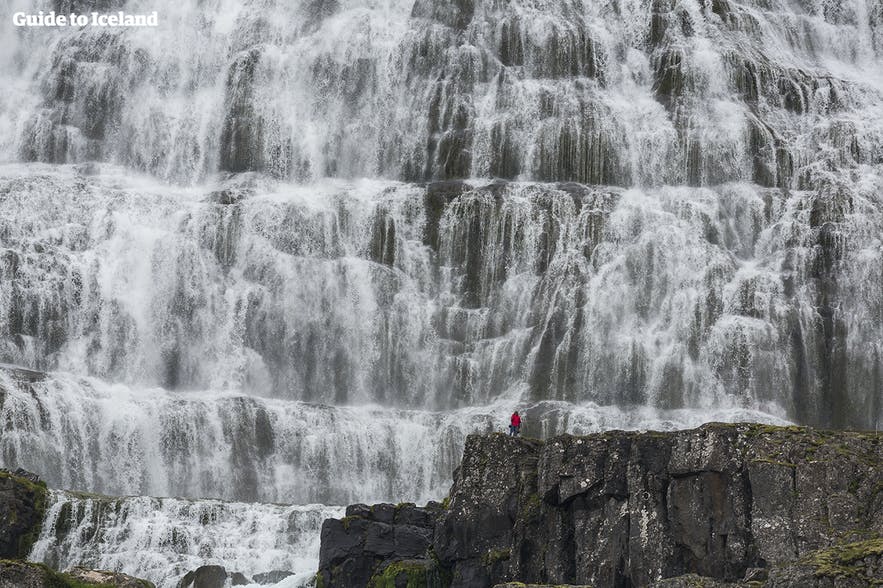
For this first one, you can be easily forgiven, as you’ve no doubt heard that Iceland’s weather is wet and volatile. However, the rain isn’t the only problem you’ll have to contend with when the weather turns to showers.
Iceland’s most notorious weather condition is, in fact, its wind. It blows erratically from all angles, battering you with unpredictable gusts, to the extent that rather than falling straight down, the rain in Iceland shoots sideways, occasionally even whipping up at you from below.
An umbrella in Iceland is not only likely to be wrenched out of your hand by wind, but it’ll never fully protect your body from all the precipitation, either.
That is not to say you should let adverse weather spoil your travels. Simply by bringing appropriate gear, you can head out rain or shine no matter the season. Waterproof and windproof outer layers, woolen jumpers, thermal underwear, hats, gloves, and sturdy hiking boots are sufficient to protect you from most conditions in the land of ice and fire.
As the saying here goes, “there’s no such thing as bad weather in Iceland; just bad clothes.”
- See also: What to Pack for Travel in Iceland
- See also: Weather in Iceland and the Best Time to Visit
23. Buying Bottled Water
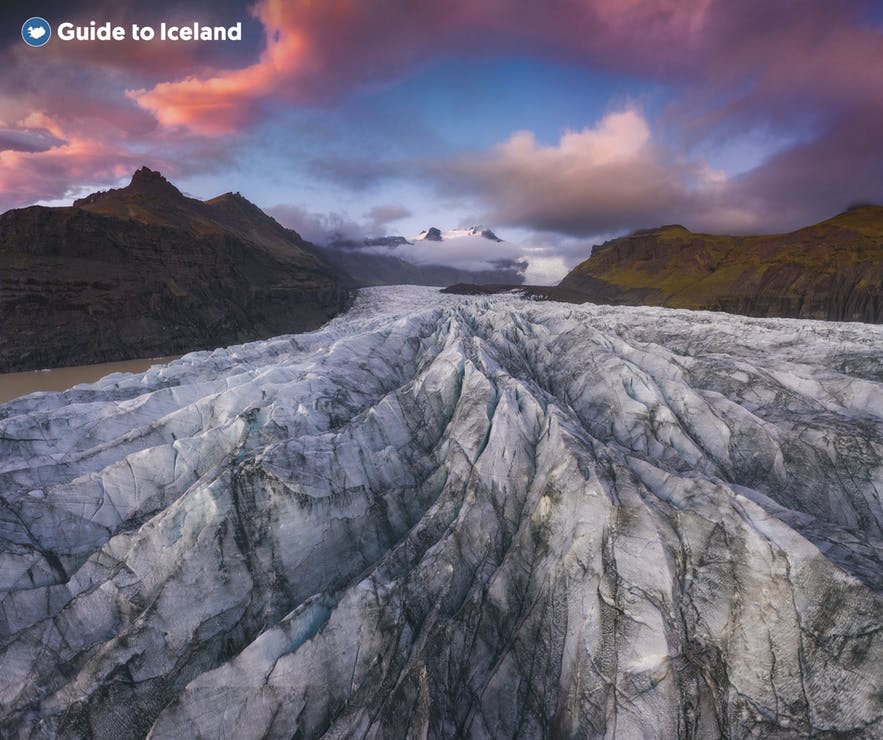
Ask any Icelander what not to do in Iceland, and often this will be their first suggestion for tourists. Bottled water isn’t just discouraged in Iceland because of its enormous environmental impact―it’s also wholly unnecessary. Eleven percent of Iceland’s surface area is capped with glaciers, with much of the meltwater of these glaciers sinking into and filtering through the porous lava rock that covers the land. This emerges in thousands of pure-water springs all around the country.
Iceland is essentially leaking at its pores with freshwater. It has an excellent natural infrastructure in pumping it up and distributing it across the nation, so that what comes out of the faucet here is pretty much the same as what fills, say, the Silfra ravine, a spring of some of the cleanest and clearest water in the world. It has no chemicals added but is packed full of natural minerals.
Companies that sell bottled “Icelandic mineral water” usually have their labels written in English for a good reason. Icelanders are aware that the concept is a scam and that they’re using the same water that comes out of the taps. Just bring a reusable water bottle from home or reuse a soft-drink one, and you’ll find yourself saving a ton of money.
Always run the tap a little first, however, as the hot water is also pumped up and tastes a bit like sulfur―although it's harmless, the flavor is unpleasantly eggy.
22. Going Out Partying and Stopping at Midnight

If you’re wondering what not to miss in Iceland, consider the vibrant nightlife. However, since the real excitement begins so late, tourists often give up and call it a night before things get started.
While most world capitals are increasingly dubbed “cities that never sleep,” Reykjavik still has quite a long siesta. Rather than moving seamlessly between bustling days of shopping to pumping nights of drinking and dancing, it tends to be relatively quiet during the evenings.
Many visitors to Iceland expect the party atmosphere they’ve heard about, only to return to their hotels before midnight, disappointed.
- Get a head start and check out The Reykjavik Bar Crawl
The reason for this is the price of drinking at the local bars. As a result of the high prices, most Icelanders prefer starting the night at home with friends before having a night out on the town.
Some people caution that nothing good happens after midnight, but they have never been to Iceland. Over the weekends, the scene won’t come alive until after midnight but will then take off with enthusiasm and continue until three, four, or even five in the morning, depending on where you are.
This is changing a little as establishments start extending their happy hours and offering drinks prices comparable to other European cities, but it remains the trend. Therefore, for a great night out, hover around the happy-hour venues until midnight comes around.
- See also: Happy Hour | Reykjavik’s Cheapest Bars
- See also: Secret Spots & Hidden Gems in Reykjavik
21. Not Going to a Swimming Pool Because it’s Cold Outside
All the swimming pools in Iceland are heated, the vast majority geothermally. With so many hot springs and thus a wealth of naturally warm water, it's no wonder that the national winter tradition of warming up in the pool is still thriving.
Few activities can be both so bracing and yet so relaxing as basking in geothermally heated waters, surrounded by snow, with even more being whipped around you by lashes of wind. The experience is unique and classically Nordic, so not something that should be missed out on by anyone seeking to participate in authentic Icelandic culture.
20. Not Bringing a Swimsuit
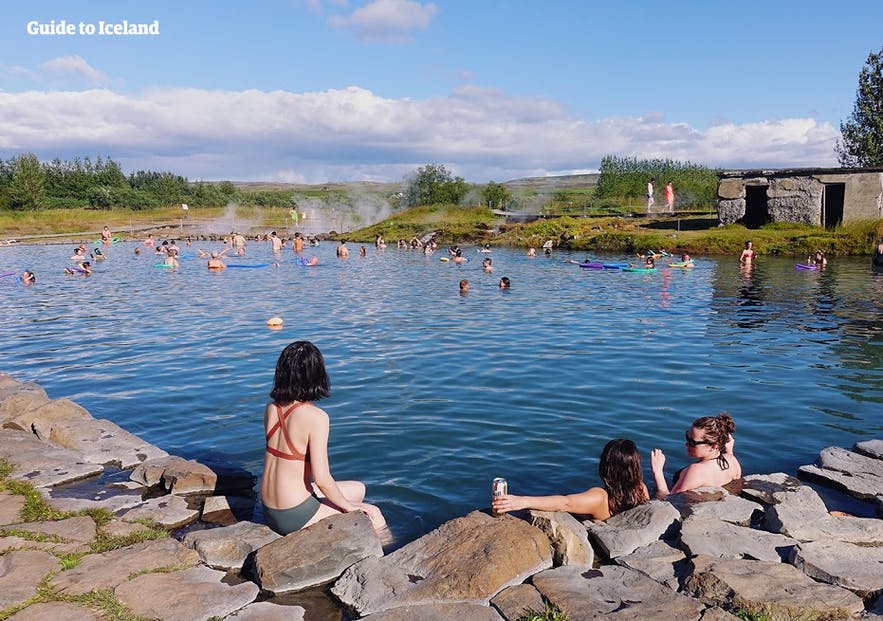
Every town of significance, and even many villages without attractions, have swimming pools. The vast majority also have hot tubs, many have saunas and steam rooms, and a few will even have healing minerals in their waters.
Some, such as the Blue Lagoon, Secret Lagoon, Myvatn Nature Baths, and Fontana Spa, are large, popular, and well-known. In contrast, others, such as the Infinity Pool in Hofsos and the Lysuholslaug Pool on the Snaefellsnes Peninsula, are more remote and secretive. All, however, are worth visiting.
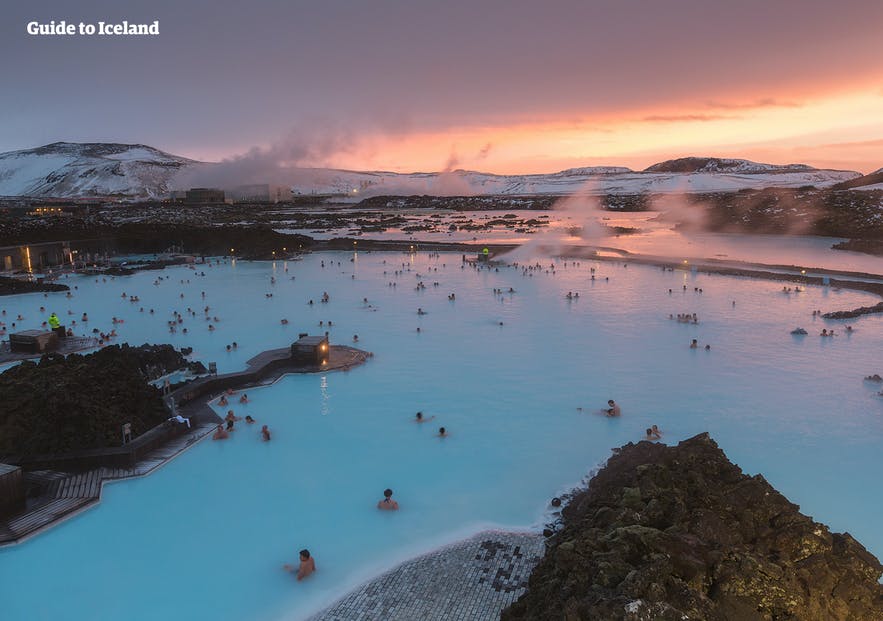
The country also has a wealth of natural hot springs, nestled into the breathtaking Icelandic nature and with a temperature perfect for bathing. At Reykjadalur, for example, you can choose where in a river to sit, based on how cool or hot you want the water to be; at Landmannalaugar, the pools are surrounded by incredible rhyolite mountains; and the highland and glacier views are unmatched to those bathing in the hot springs of Hveravellir.
No matter your plans in Iceland, you'll always be grateful to have your swimsuit with you.
19. Relying Solely on Your GPS
This point is best illustrated regarding the now-famous tale of Noel. A 28-year-old tourist visiting from New Jersey picked up his rental car as usual from Keflavik Airport after a long flight. He tiredly typed the name of the street of his Reykjavik hotel into the GPS: Laugarvegur.
- See also: The Ultimate Guide to Downtown Reykjavik
Unfortunately, however, his hotel was on the street Laugavegur―note the missing “r” ―and there’s no road in the capital corresponding to what he wrote.
The journey from the airport to Hotel Fron should have taken Noel less than 50 minutes. However, his exhausted mind and the certainty of his GPS meant that he ended up driving for over five and a half hours to the charming northern village of Siglufjordur, which does have a street called Laugarvegur.

Although all worked out in the end, when the first suspicious and bewildered, then thoroughly entertained, staff allowed him to stay the night for free at Hotel Siglufjordur. This story shows the importance of spelling out Icelandic place names carefully. And of having a vague idea of where your destination should be located and not blindly trusting GPS devices and or your phone.
Another one of the things to be careful of in Iceland is that several place names are the same across the country. For example, if heading to Keflavik Airport, make sure you don’t instead start driving for Keflavik in the Westfjords. It may seem old-fashioned, but having a backup, foldable map is an excellent idea in Iceland.
- See also: Maps in Iceland
18. Trying to Book a Room in an Ice Hotel
Iceland doesn’t have ice hotels. Despite its name, it's not cold enough to sustain one, and you’ll have to look to Norway, Sweden, Finland, or Canada for an ice hotel.
If you want to experience the world surrounded by ice, however, there are still opportunities here to do so. Artificial tunnels have been carved into the Langjokull glacier, and you can visit throughout the year to look within its halls and many rooms (one of which is a chapel). If traveling in the winter months, you can have a more natural experience by exploring the blue ice caves that become accessible beneath the Vatnajokull glacier.
17. Coming in Winter To See the Midnight Sun or Summer To See the Northern Lights
The midnight sun in Iceland, when the sun never fully sets and the nights are basked in light, occurs the weeks before and after the summer equinox from late May to early August. However, the skies will never turn dark, even when the sun is below the horizon. With so much light pollution, it's thus absolutely impossible to see the northern lights, even though they’re still dancing above us in space.
- See also: Iceland in May and Iceland in August
You must, therefore, wait until the skies begin to darken in late August. From then until the start of May, the auroras can be seen clearly and regularly. Of course, at this time, there’s no midnight sun.
Therefore, when visiting Iceland, it's vital to prioritize which of these phenomena you would like to enjoy most, as you'll never find them co-occurring.
- Read more about The Northern Lights and Midnight Sun in Iceland
16. Bringing a Flashlight to a Camping Trip
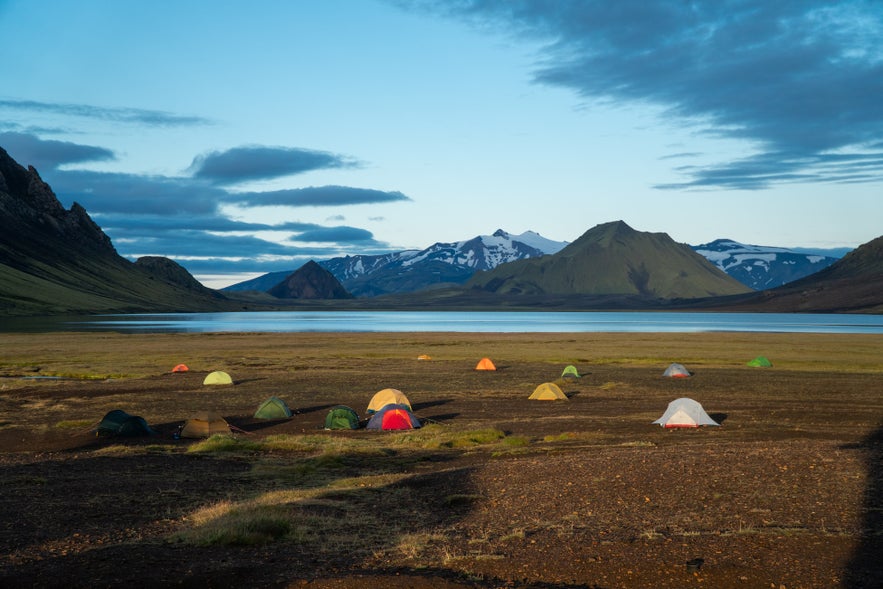 Photo by Pavel Brodsky
Photo by Pavel Brodsky
Camping in Iceland is largely only possible throughout summer; it's simply too cold after September and before May to even consider it. These are the months of the midnight sun, however, so there’s no need to bring a flashlight; you’ll appreciate a sleeping mask more.
The only reason you might need a flashlight in Iceland’s summer is for lava caving, but guides always provide these. Due to the caves’ darkness and how easy it's to get lost, it's only encouraged to enter one on an official excursion.
15. Trying to Photograph the Northern Lights with a Flash
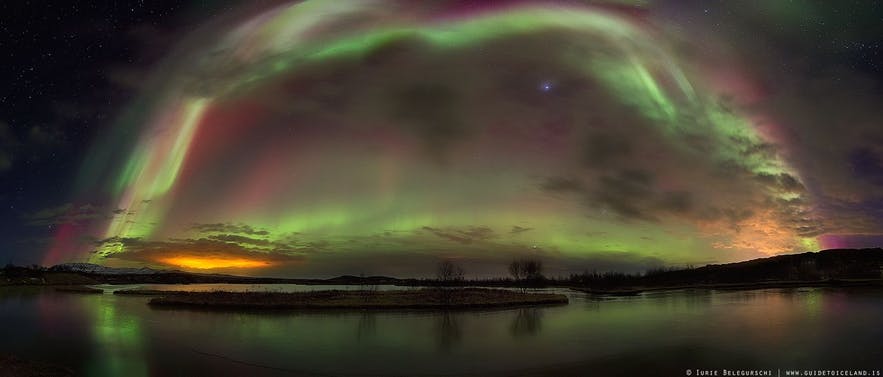
This may seem obvious to anyone who knows about photography, light, and exposure, but it’s important to note for novices. Due to the darkness required for the aurora borealis to show, you need to allow your camera a long exposure time to capture them adequately, and a flash will simply wash them out instantly.
- See also: Photography in Iceland
The flash will also affect your eyes as they adjust to the said darkness, so it will impact your viewing experience – as well as the experience of those around you (and they will not be happy with you). If you want to capture the auroras on camera but don’t know how, the guides on northern lights tours will assist you.
- Check out this Iceland Winter Photography Workshop
14. Leaving for a Day Out in Winter at Sunrise
Iceland has but four hours of daylight in the weeks surrounding the winter equinox in December. Therefore, if you set out on a sightseeing journey at sunrise, it had better be somewhere nearby, as nightfall will be coming around before you know it.
Some places self-driving visitors try to see in a single day, such as the Jokulsarlon glacier lagoon, take more time to get to than you have hours of light. (In winter, we'd recommend at least two days to visit this particular destination.) Although seeing this site beneath the aurora borealis is a dreamlike experience, embarking on the return journey in total darkness on icy roads promises to be quite the nightmare. This is one of the important things not to do in Iceland.
13. Throwing Coins into the Pools and Hot Springs
I’m afraid to say that throwing a coin into a hot spring and casting a wish will only come true if you desire to release heavy metals into our nature and water supply. We therefore kindly request you keep your money in your pockets; considering the cost of groceries, we are sure you’ll end up very grateful for it.
- See also: Things Icelanders HATE About Tourism in Iceland
- See also: How Expensive is Iceland?
12. Only Staying in Reykjavik
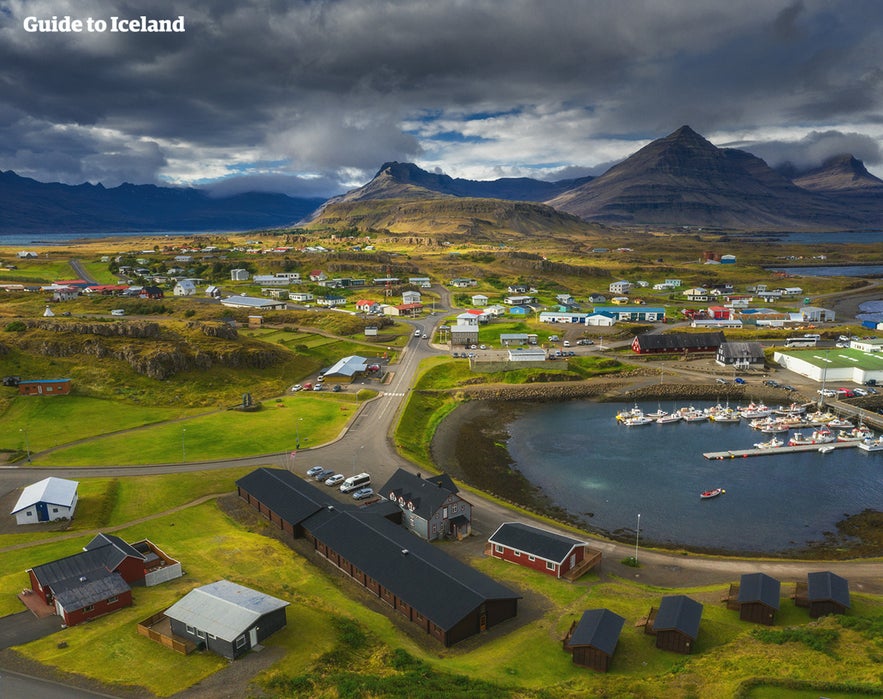
The one tourist I have ever encountered who did not enjoy their holiday to Iceland had booked a two-week stay but did not rent a car or join any tours outside the capital.
While Reykjavik is a great city, with many museums, galleries, cultural sites, theaters, historical locations, parks, pools, and public artworks, it's hardly Iceland’s greatest attraction. Anyone staying longer than a weekend really should seek out more.
- See also: The Reykjavík Guide and Top 10 Things to Do in Reykjavík
To truly appreciate this country, you must see its nature. Even if you just take the classic Golden Circle tour, you'll expose yourself to a bursting geothermal area, a historic UNESCO World Heritage Site located right between two visible tectonic plates, and an incredible waterfall. A day tour of the South Coast will reveal more waterfalls, glaciers, volcanoes, geological wonders, and black sand beaches.
On the drive from Keflavik Airport to Reykjavik, you'll see lunar lava landscapes, and from the city, incredible peninsulas and great flat-topped mountains across the bay. To only admire them from a distance, however, is like going to Orlando and only driving past the theme parks, or on a safari holiday to Kenya and then not leaving your lodge.
You might have a pleasant time, sure, but you are not making the most of the once-in-a-lifetime opportunities available.
11. Littering
This point needs little explanation. No matter where you are in the world, it's inexcusable. Reykjavik is renowned for being a clean city, and our nature’s beauty is only so because of how little impact people have had on it. If anyone sees you compromising the environment by littering, prepare for an earful, harsh fines, and bad karma. This includes dropping cigarette butts and gum.
- See also: Iceland’s Troubled Environment
10. Trying to See a Penguin or Polar Bear
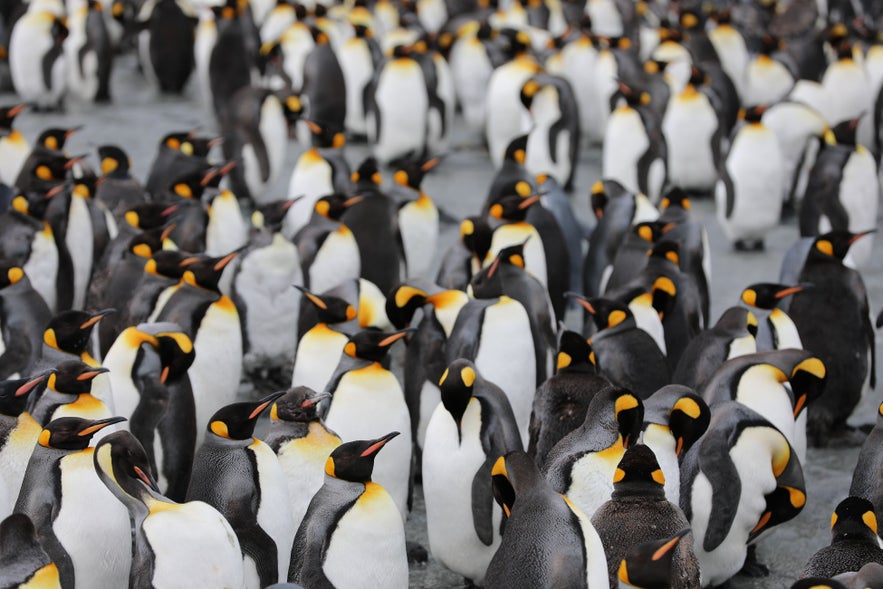 Photo by Martin Wettstein
Photo by Martin Wettstein
Penguins only live in the Southern Hemisphere, so if you are eager to see one in the wild, you had best head to Argentina, Chile, or southern New Zealand, since you’ll be looking for a long time in Iceland.
While we lack penguins, we still have a considerable wealth of birdlife, including their distant cousin, the puffin. Iceland has 60 percent of the world’s North Atlantic Puffin population, so avid bird watchers need not despair.
- See also: Where to Find Puffins in Iceland and Birds in Iceland
Polar bears, conversely, only live in the Northern Hemisphere but do not reside in Iceland; they require the colder temperatures found in Norway, Canada, and Greenland.
 Photo by Hans-Jurgen Mager
Photo by Hans-Jurgen Mager
Occasionally, these Greenlandic bears end up in Iceland, caught on loose icebergs drifting to the Westfjords. However, they arrive starving and are therefore more likely to attack humans.
- See also: Wildlife and Animals in Iceland
9. Not Filling up on Alcohol at the Duty-Free Store
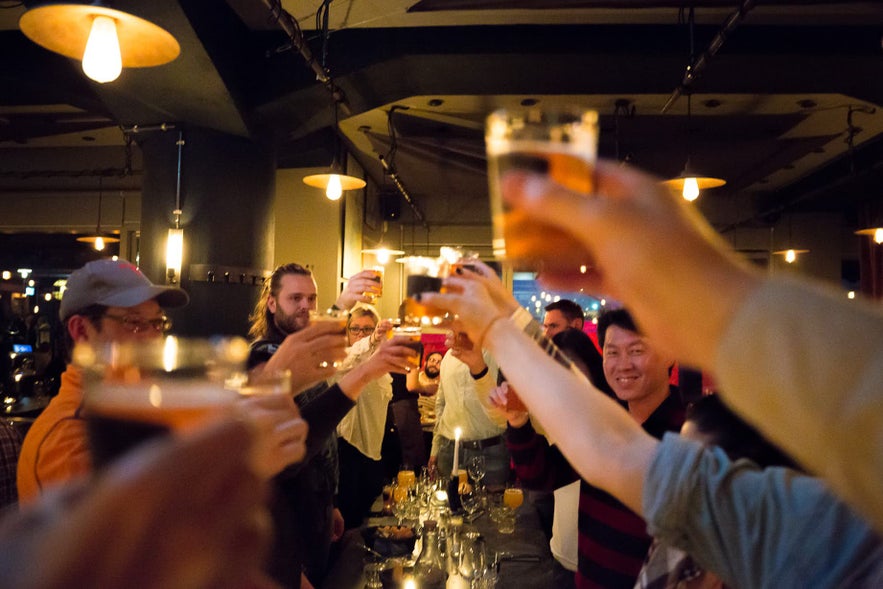 Photo from Locally Hosted Reykjavik Beer & Food Tour at the Old Harbour
Photo from Locally Hosted Reykjavik Beer & Food Tour at the Old Harbour
Iceland has unusual laws when it comes to purchasing alcohol. While you can buy drinks from restaurants and bars as easily as you can in most other European countries, they’re not available in supermarkets or corner shops. You can only purchase them at the airport and in the government-run liquor stores called Vinbudin.
Vinbudin shops have limited opening hours, are not located in easily accessible locations all over the country, and sell their products with high duty and taxes. To avoid this, buy as much as you’ll need at the airport, where alcohol is half the price.
- See also: Top 9 Beers in Iceland
- See also: The Best Bars for Craft Beer in Reykjavík
8. Not Dressing According to the Weather

This was insinuated a little earlier, but it's significant enough to warrant its spot on our list. The weather in Iceland, even in summer, can be unpredictable, cold, wet, and violent, so you'll need to be prepared at all times with waterproof, windproof, and warm clothing, especially if traveling out in nature for an extended period.
It's also important to dress according to what’s required for tours you might take. If embarking on a glacier hiking tour in midsummer, it’s crucial to bring sunglasses; the sun’s reflection against the white ice can be blinding.
If taking a snorkeling tour in Silfra, bring extra-warm socks regardless of the season. The drysuit boots aren’t always padded, so glacial water will chill your toes in minutes if you’re only wearing thin cotton socks.
7. Leaving Marked Trails in Geothermal Areas
Iceland’s geothermal areas are magnificent places where you can see seething mud-pots, bubbling hot-pools, hissing fumaroles, and even exploding geysers. This is possible because of the boiling water running below the ground’s surface and Iceland’s active tectonic activity. These factors, however, are constantly changing, which can lead to hazardous circumstances and are therefore one of the things to be careful of in Iceland.
Areas of the earth that may seem stable might be a thin layer covering a pocket of scalding water. Streams trickling in one place may be far hotter than in others, while usually temperate pools may suddenly start to boil in certain areas.
It's essential to take extreme care in these geothermal hot spots.
By far, the easiest way to protect yourself is to stay on the marked paths. These guide you through the most stable areas and will often have fences holding you back from the more volatile sites. Even though the collapsed walkway in the middle of the country’s largest mud-pot at Gunnuhver is a stark reminder that unpredictable activity can occur anywhere, you are still a lot safer following the approved trails.
- Visit Gunnuhver and Krysuvik on this Private Reykjanes Peninsula Tour
6. Writing in the Moss

Iceland has few forests, and though it's home to Arctic flora, it's not renowned for it. Its primary “vegetation” is a moss that colonized vast swaths of the landscape, including old lava fields and the crags of mountains and cliffs. Though outsiders usually find it haunting and unusual, Icelanders consider it beautiful and precious and are determined to protect it.
This is because it's incredibly delicate, and if damaged, it takes decades to recover. Try to see it like a coral reef―impacts made on it by humans, whether intentionally or mistakenly, will remain visible to later visitors for years to come.
The tracks from off-road drivers (see the point below) will snake across otherwise untouched landscapes, and campers who peel sections off for a bed to lie on in exchange for one comfortable night cause decades worth of damage.
But the most obnoxious thing that travelers to Iceland tend to do with our moss is carving their names into it; this is nothing but vandalism and environmental degradation. Initials of travelers from the late 19th century are still visible on hillsides outside of Reykjavik. While they may not have known better, modern visitors are expected to show less ignorance.
5. Driving Off-Road in Iceland
Iceland’s moss is not the only part of the Icelandic nature the people seek to protect. The lava fields, glaciers, and black sand beaches are also delicate and are treated as such by the locals. For this reason, driving off-road is completely forbidden in all corners of the country unless you are in immediate danger.
If you wish to see the interior of Iceland, you can do so by renting a four-wheel drive vehicle and sticking to the F-Roads. You'll be able to go down bumpy, barely used tracks, across rivers and up winding mountain passes, taking you deep into nature, surrounding you with uninterrupted views, all while posing no risk to the environment.
If you drive off-road, prepare for punishment that may seem disproportionate but is considered entirely necessary and fair by this country’s nature-loving populace. You'll face fines of about 3,825 USD, potential jail time, and a lecture you’ll never forget.
- See also: The Ultimate Guide to Driving in Iceland
4. Going for Highland Roads in a Two-Wheel Drive Vehicle
Sticking to the roads as you travel is essential, but for your safety, you also have to make sure your vehicle is up to the challenges of the route you decide to take. A two-wheel drive is perfect for the Ring Road in summer, and in winter, it's even manageable for traversing the South Coast and Golden Circle for those experienced with dark, icy conditions. Still, they’re very dangerous to take into the Highlands. Attempting this is another one of the things you should avoid in Iceland, as it will never have a happy ending.
To navigate the Highland routes, F-Roads, and even many of the major roads in the East and North in winter, you'll need a four-wheel drive. Ice, potholes, snowbanks, loose gravel, rock-falls, rivers, and steep slopes are not safely navigable in an average car.
The one exception to this is the Kjolur Highland Road, which any vehicle can take in the heights of summer – but even so, no rental company will insure you to take a two-wheel drive there.
3. Underestimating the Forces of Fire and Ice
Iceland is often referred to as “the land of ice and fire,” two elements that are not renowned for being forgiving. Visitors, therefore, have to understand the destructive power that the extreme natural forces of Iceland hold and give them due respect.
Take, for example, the element of fire. When the volcano Holuhraun erupted in 2014, many visitors were eager to see the spitting lava. While the responsible tourists took sanctioned tours to fly above it, some decided to head right up to it for a photo opportunity. Not only did their off-road driving damage the surrounding nature, but they put their lives at enormous risk.
When thrust into the air, liquid lava usually comes down as raining rock, a form of precipitation that even the most well-packed traveler cannot easily prepare for. Not only that, but the gases coming from the earth are incredibly toxic―in the 1783-4 Laki eruption, 80 percent of the nation’s sheep were killed by the poisonous fumes.
- See also: Volcanoes in Iceland and History of Iceland
Even in Reykjavik, there were days during Holuhraun’s eruption when those with respiratory problems and the old and young were encouraged to stay indoors. Therefore, standing right at the ravine is about as good for your system as breathing the air on the edge of a chemical factory’s chimney.
The element of ice is no less dangerous. Unknowing visitors often attempt to scale the glaciers or explore the ice caves without guides, exposing themselves to hidden, plunging crevasses and icefalls, respectively. These activities are very safe when taken with an expert, but for those without experience, they become markedly more life-threatening.
Because most of the nation is tundra, the water from natural springs is often near freezing; extreme care must be taken. Springs such as Silfra in Thingvellir are around 35 F (2 C) year-round, so they can only be entered with protective equipment such as wetsuits and drysuits.
One particularly notorious family encouraged their child to jump naked into a spring here and were too busy laughing to notice that the child was too cold to climb to safety. Thankfully, a ranger discovered them and helped the near-hypothermic child out of the water before giving the parents a thorough, humiliating, and well-deserved dressing down.
2. Climbing on the Icebergs at Jokulsarlon
Some terrible and widely publicized examples have been set here, even by Icelanders who should know much better. In music videos and even tourist promotional videos, people are climbing on the icebergs of Jokulsarlon, Fjallsarlon, and other glacier lagoons, portraying them as the best places to have a little dance or play their songs.
Any other location in Iceland is much more suited to these activities. The icebergs that pass through these lagoons are incredibly slippery, constantly moving, breaking apart, and rotating. Thus anyone standing on them is in immediate danger of falling into the freezing waters below.
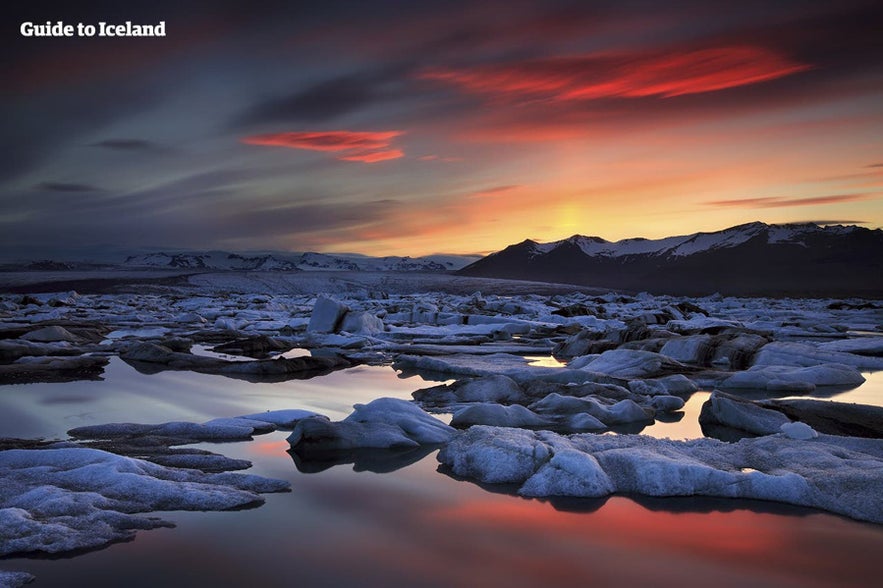
Once in the water, the temperature and shock will cause immediate panic. The movement of the bergs means they could easily tilt on top of you. Often as large as multistory buildings, it’s nearly impossible to escape.
Jokulsarlon is particularly dangerous because it's the deepest lake in Iceland, connected directly to the ocean and a crumbling glacier. Thus, it has powerful currents that can drag you deep underwater.
Standing on an iceberg to emulate the behaviors you’ve seen in videos or for the perfect photo opportunity is the second dumbest thing you can do in Iceland. It's more than enough to appreciate these incredible lagoons from the shore for unbelievable pictures and perspectives. If you want to immerse yourself further, there are boat tours available.
Jokulsarlon has tours on RIB and amphibious vessels, while you can also enjoy a RIB excursion on Fjallsarlon.
- See also: Glacier Lagoons in Iceland
1. Playing in the Surf at Reynisfjara Beach
Topping the list of things not to do in Iceland is taking any risks at all at Reynisfjara beach on the South Coast, one of the beautiful Iceland dangers. This incredible stretch of black sand is a trendy sightseeing spot for its fascinating geology, such as the Reynisdrangar sea-stacks. Still, it's not a place to be underestimated.
No landmass divides the Atlantic Ocean from the Antarctic to Iceland. The waves that build across this distance, which stretches for thousands of kilometers, arrive at the South Coast with immense power.
Due to the seabed at Reynisfjara, they often rise suddenly before making land and are dubbed sneaker-waves as a result. They can rush high up the shore and have caught many people who ventured too close to the water off-guard.
After several tragedies in the area, where lives have been lost, the site is now home to dozens of warning signs and cordoned-off regions, protecting visitors and locals alike. Due to Reynisfjara’s popularity, there will almost always be tour guides on-site, ensuring visitors adhere to these rules.
- Read Regina's blog: Extremely Dangerous Waves by Reynisfjara and Kirkjufara
Even so, individuals who can only be described as dumb continue to cross boundaries for that perfect Instagram shot or to see how cold the water is. These people are not only putting their lives at risk but the lives of anyone nearby who may attempt to save them, as well as the lives of the hardworking volunteers of the rescue teams who will be deployed if they’re washed away.
Reynisfjara’s otherworldly beauty can be appreciated fully while respecting the safety guidelines. Even if taking a single step past a boundary might make for a slightly better photo, I can promise it will not be good enough for you to risk your life and the lives of others.
All in all, people have done some pretty dumb things in Iceland, as silly as expecting to see penguins and as dangerous as throwing their children into freezing waters for their amusement.
Hopefully, with this list of what not to do in Iceland, we can help provide some much-needed guidance to even the most common-sense-averse travelers and give a little advice to those looking at coming here for the first time not knowing what to expect.
By just doing a little research, using your head, and above all listening to the advice of locals, you can ensure you have a safe and thoroughly enjoyable holiday in Iceland―while maintaining your rep’ of not looking like a total fool.
Is there anything we missed on this list of things not to do in Iceland? Did you do anything you instantly realized was pretty dumb to do on your travels here? What was the most unusual thing you saw another traveler doing? Let us know in the comments.
Altri articoli rilevanti

Gli Yule Lads islandesi e Gryla | I troll di Natale in Islanda
Chi sono gli Yule Lads islandesi? Chi si festeggia in Islanda a Natale se non Babbo Natale? Che ruolo ha la gigantessa Gryla nel folklore natalizio islandese e chi è il gatto di Natale? Continua a l...Leggi altroLa vigilia di Capodanno in Islanda
Com'è la vigilia di Capodanno in Islanda? E a Reykjavík? Cosa rende il Capodanno in Islanda così speciale? Dove si tengono i migliori veglioni di San Silvestro a Reykjavik? Dai una risposta a ques...Leggi altroNatale in Islanda | La guida completa alle tradizioni natalizie, al cibo e a tanto altro ancora!
Scopri tutto sul Natale in Islanda. Quali sono le principali tradizioni natalizie islandesi? Perché l'Islanda ha 13 Yule Lads e non Babbo Natale? Come si festeggia il Natale in Islanda? Com'è il Nat...Leggi altro

Scarica il più grande mercato di viaggi in Islanda sul telefono per gestire l'intero viaggio da un unico posto
Scansiona questo codice QR con la fotocamera del telefono e premi il link che compare per avere sempre in tasca il più grande mercato di viaggi in Islanda. Inserisci il numero di telefono o l'indirizzo e-mail per ricevere un SMS o un'e-mail con il link per il download.

